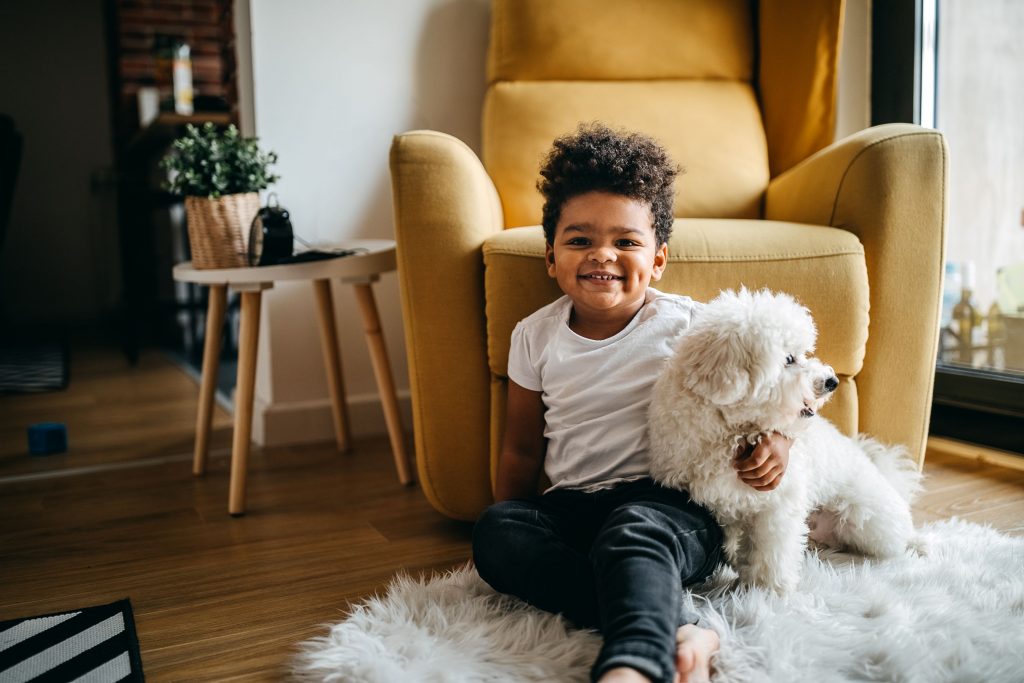How To Train A Family Dog To Be Kid-Friendly
How To Train A Family Dog To Be Kid-Friendly

While dogs are very intelligent, they don’t go from zero to trained in a day. Some breeds are more eager to learn and listen than others, but all have the capability of learning various commands. Working diligently with your dog on some basic commands will help establish your relationship as one of trust, obedience, and boundaries.
Back to Basics
You’ll want to start with teaching your dog core obedience basics such as sit, stay, wait, down, and leave-it. It is helpful to start basic training when they are young and their brains are absorbing everything around them. It can be more difficult to train older dogs because they are more set in their ways, but it isn’t an impossible task. Spend a few minutes each day working on these basic commands with either praise or a small treat as a reward so your dog associates these behaviors with positive outcomes.
From Sit to No-Jump
Once you move on to intermediate training, you should work specifically on teaching your dog appropriate greetings and interactions. Dogs can do some damage if they jump up on a child, so in order to avoid that, they have to learn to contain their excitement. Here are some basic steps to start this training:
- Start in a quiet, low-distraction area (preferably inside your home if space allows)
- Give your dog the sit and stay command while leashed
- Have another adult and a child walk about 6 feet away past you and your dog
- Praise your dog if they continue to sit and not jump
- Repeat over and over, and have the other adult and child walk closer each time
Remember that any sort of training will only work with hours of repetition and discipline. Training is hard work and it’s okay to ask for more help. Successfully training your dog to refrain from jumping on people is so important and will ensure they don’t knock a little tyke down when out and about.
Kids Need Training Too!
Remember that you chose to own a dog for the fun and enjoyment of their company. While providing them with all the care, love, and attention they need, you shouldn’t force the relationship between kids and your dog. If your child is afraid of dogs, make the introduction slowly. Same for your pooch; if they’re skittish or stand-offish, don’t force them to interact. Instruct your kids to be gentle with your dog and teach them how to nicely pet or scratch the pup and where. Teach them not to do certain things such as pulling the tail or fur or hitting. Kids are louder and more aggressive than adults, so it is important to teach kids that if they can stay calm when interacting with a dog, then the dog will be more likely to remain calm. Both dogs and kids need to learn how to appropriately play with one another.
Is That For Me?
You’ll want to show your dog the difference between a child’s toy and dog toys. Remember that leave-it command your dog learned last week? Command your dog to leave-it when they run around with your child’s favorite play-thing. Be sure to replace the inappropriate toy with a dog-friendly toy so your pooch learns the difference. Pro tip: this same training can be used if your dog likes to pick up and chew shoes and slippers!
Don’t Be Afraid to Ask for Help
You may consider searching for core obedience programs in your area. Training programs range from group classes at your local pet store to “send-away” programs that may be pricey, but are definitely effective. You should spend some time with your dog to gauge what might work best for them. Something else to consider is whether your dog has anxiety or behavioral-based issues. Talking to your vet about your dog’s behaviors may also be helpful to determine if medical intervention is necessary.
To keep your pup ready to learn and train, it is essential to maintain their health and wellness. Be sure to schedule annual check-ups to keep them healthy.
